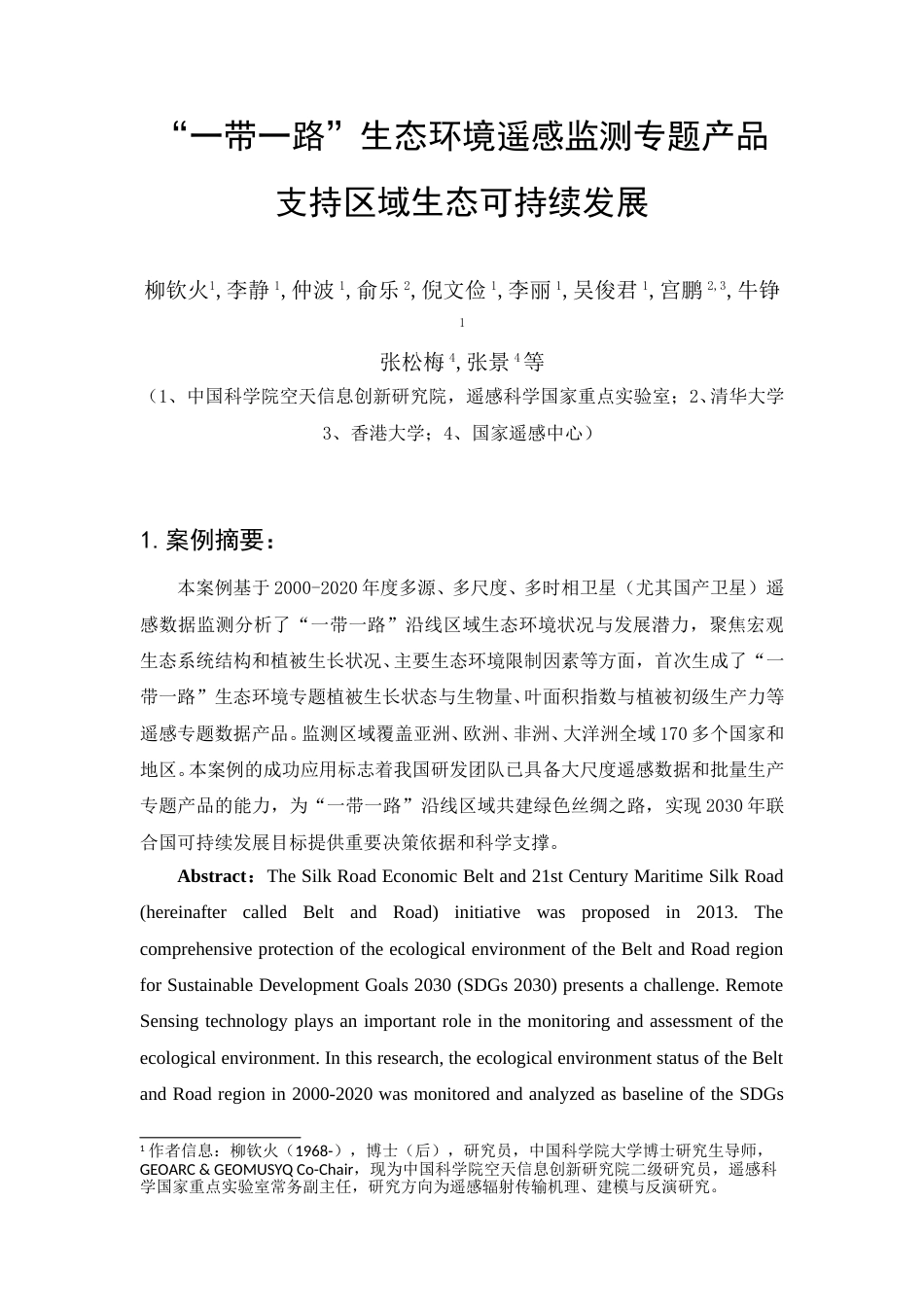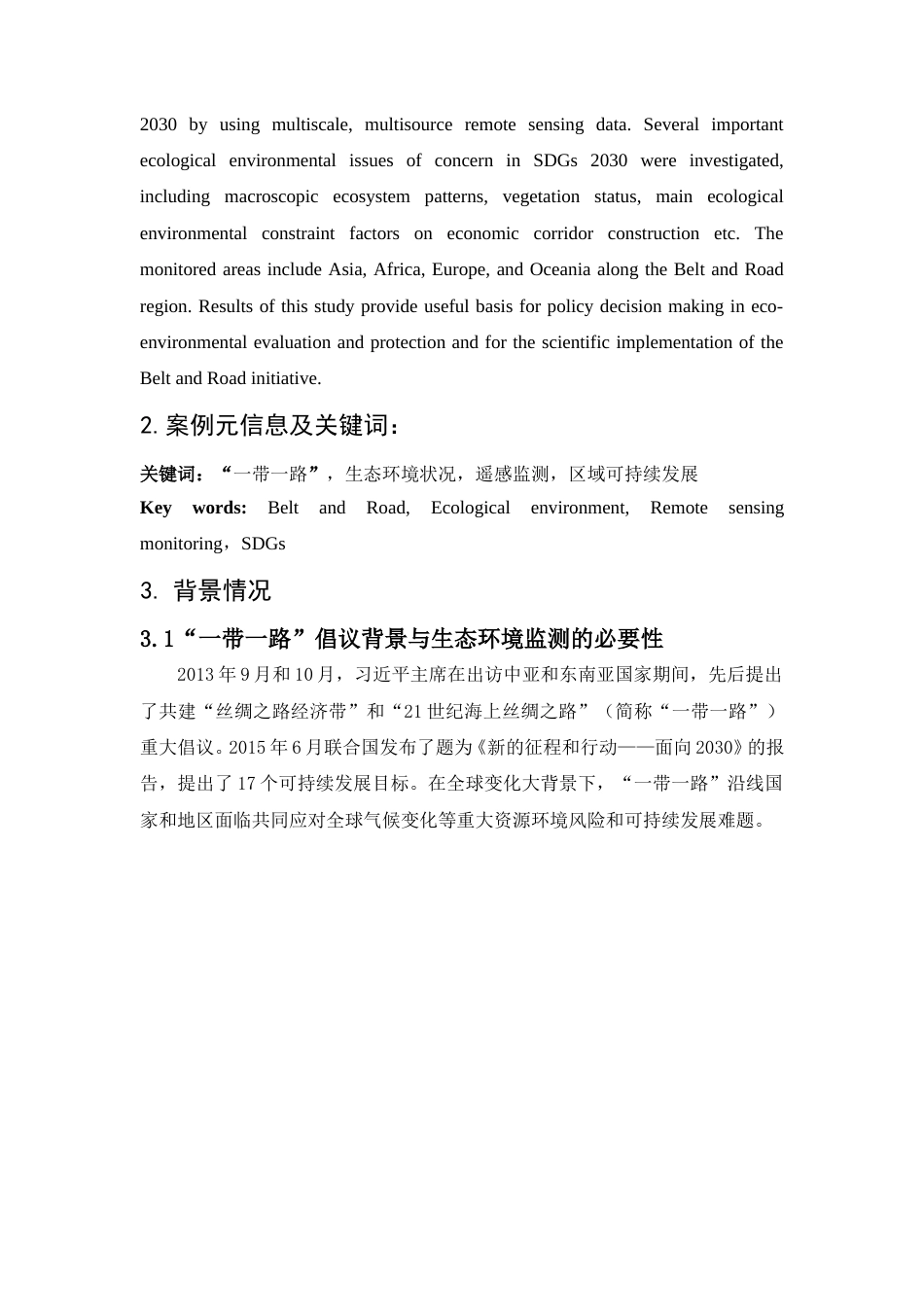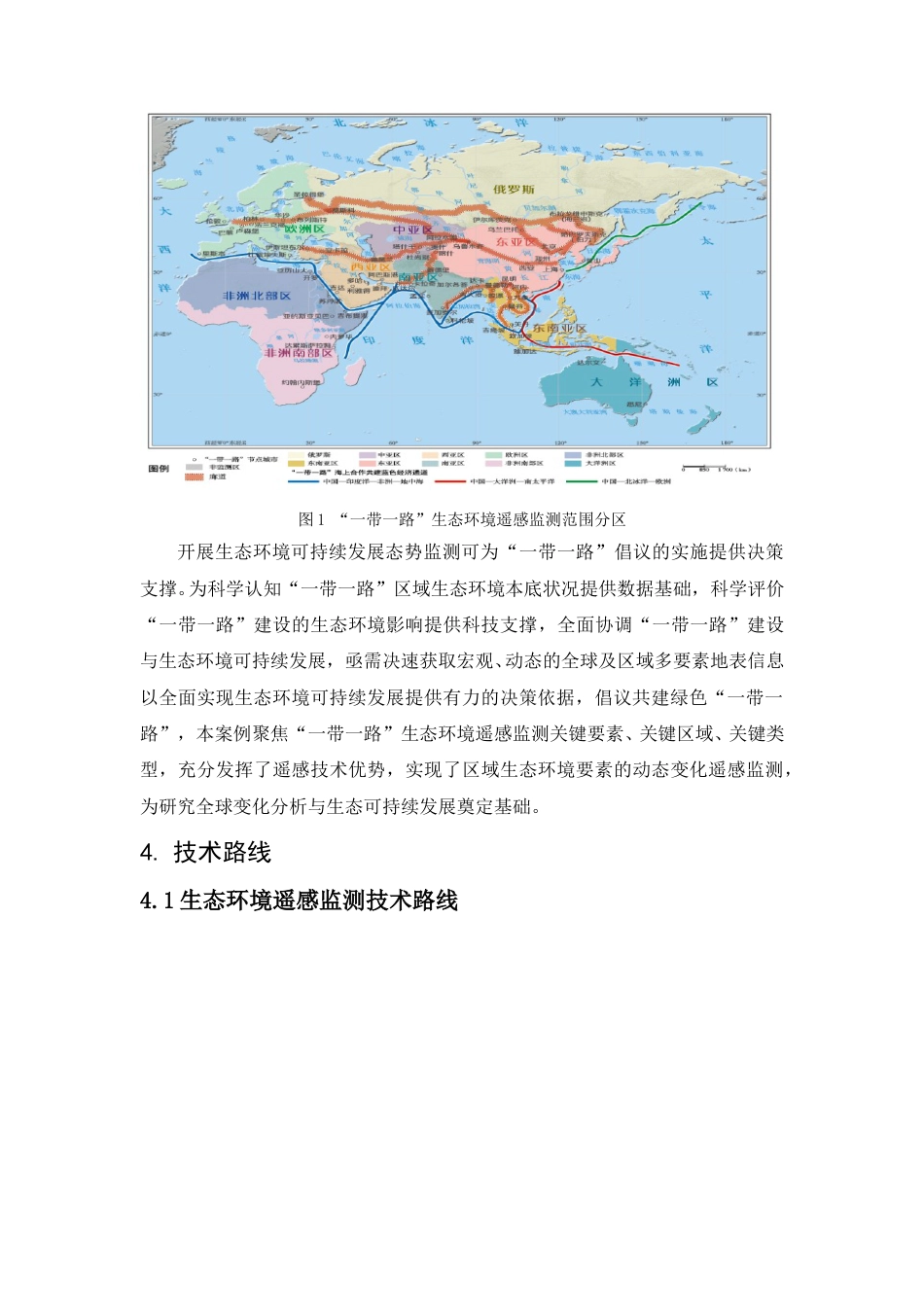“一带一路”生态环境遥感监测专题产品支持区域生态可持续发展柳钦火1,李静 1,仲波 1,俞乐 2,倪文俭 1,李丽 1,吴俊君 1,宫鹏 2,3,牛铮1张松梅 4,张景 4等(1、中国科学院空天信息创新研究院,遥感科学国家重点实验室;2、清华大学3、香港大学;4、国家遥感中心)1.案例摘要:本案例基于 2000-2020 年度多源、多尺度、多时相卫星(尤其国产卫星)遥感数据监测分析了“一带一路”沿线区域生态环境状况与发展潜力,聚焦宏观生态系统结构和植被生长状况、主要生态环境限制因素等方面,首次生成了“一带一路”生态环境专题植被生长状态与生物量、叶面积指数与植被初级生产力等遥感专题数据产品。监测区域覆盖亚洲、欧洲、非洲、大洋洲全域 170 多个国家和地区。本案例的成功应用标志着我国研发团队已具备大尺度遥感数据和批量生产专题产品的能力,为“一带一路”沿线区域共建绿色丝绸之路,实现 2030 年联合国可持续发展目标提供重要决策依据和科学支撑。Abstract:The Silk Road Economic Belt and 21st Century Maritime Silk Road(hereinafter called Belt and Road) initiative was proposed in 2013. Thecomprehensive protection of the ecological environment of the Belt and Road regionfor Sustainable Development Goals 2030 (SDGs 2030) presents a challenge. RemoteSensing technology plays an important role in the monitoring and assessment of theecological environment. In this research, the ecological environment status of the Beltand Road region in 2000-2020 was monitored and analyzed as baseline of the SDGs1 作者信息:柳钦火(1968-),博士(后),研究员,中国科学院大学博士研究生导师,GEOARC & GEOMUSYQ Co-Chair,现为中国科学院空天信息创新研究院二级研究员,遥感科学国家重点实验室常务副主任,研究方向为遥感辐射传输机理、建模与反演研究。2030 by using multiscale, multisource remote sensing data. Several importantecological environmental issues of concern in SDGs 2030 were investigated,including macroscopic ecosystem patterns, vegetation status, main ecologicalenvironmental constraint factors on economic corridor construction etc....



